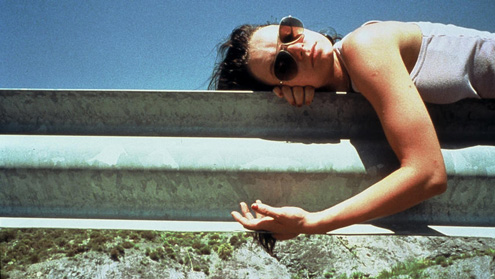Introduction
Lynne Ramsay, the director of the film Morvern Callar has made the valuable observation that “I love to see great dialogue in the cinema but I hate to see ‘Film TV’. When I go to the cinema I want to have a cinematic experience….I like dialogue when it’s used in a way where the body language says the complete opposite…? [1] Ramsay’s emphasis on the importance of the non-verbal is highly relevant in relation to Morvern Callar and, more generally it alerts us to an ‘alternative’ to the typical kind of storytelling that we tend to know from our film viewing and spectatorship e.g. films that have a large amount of dialogue.
Morvern Callar is interesting for its aesthetic combination of both realism and a more lyrical and obvious artifice in the telling of a story that follows what happens when a young woman begins to ‘rebuild’ her life after her boyfriend’s suicide. The film has a plot, albeit one requiring minimal exposition. It’s important to note that the film is an adaptation of a novel of the same name by Alan Warner that was published in 1995, not long after Irvine Welsh’s novel Trainspotting: another Scotland-set novel that became a film and which, unlike Morvern Callar became a huge commercial success in Britain; a number of its images, excerpts of dialogue and music being re-appropriated by the broader popular culture and so assuming new resonances and values in subsequent years.
Text
Critically, film and prose fiction are different media and accomplish different things, each with their own limitations and opportunities for expression. One…
